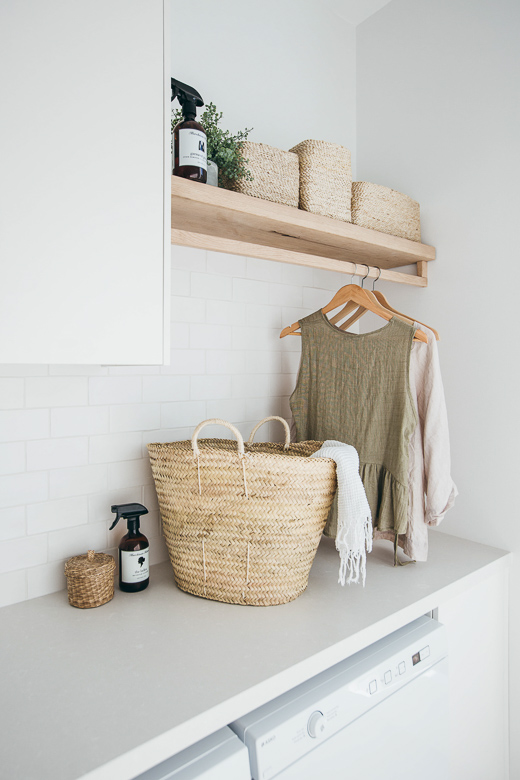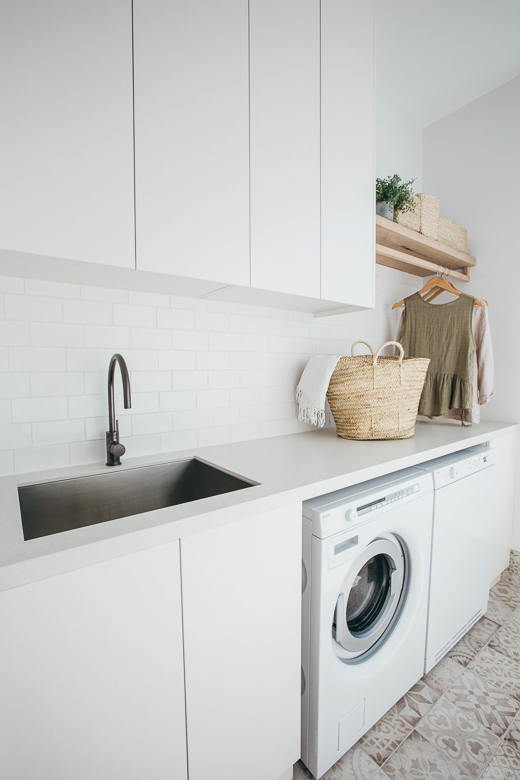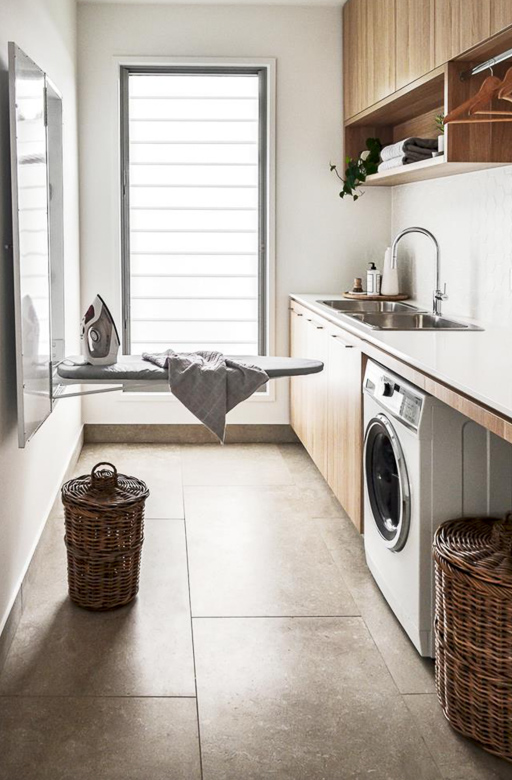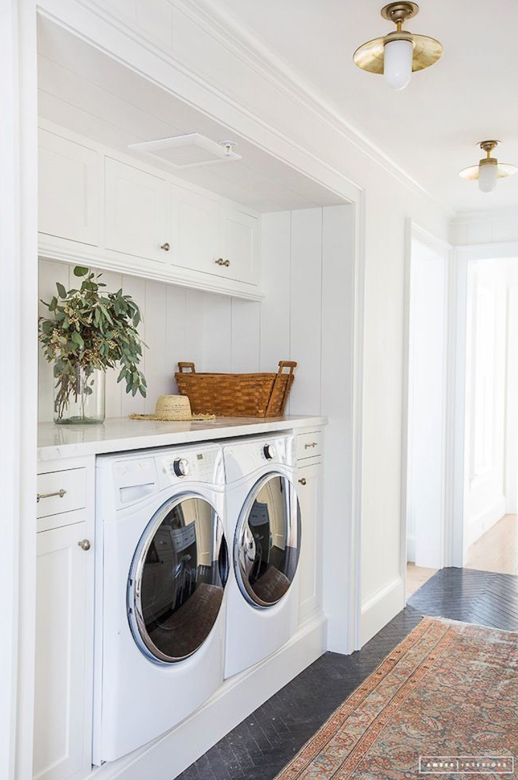Is a laundry just a laundry?! With so much time spent washing clothes, I want our laundry to bring me joy!
Following on from our Mud Room journal, next up it’s time to focus on the laundry. When asking you all what the ‘must haves’ were in a family home, plenty of you were keen to jump in and give advice around planning the ultimate laundry.
Location
Something to consider in the planning stage of a renovation or new build is where you would like your laundry situated. Many of you suggested that having a laundry directly off the kitchen and/or butlers pantry was ideal. To be honest, this doesn’t make a lot of sense to me but I’d love your thoughts! Others suggested a laundry off your garage. External access close to the clothesline is also ideal. Laundry chutes can also be factored in to the floor plan early on. I have to admit I’ve previously thought these are a bit of a gimmick – but since having kids, I take that back!
On our original plans, our laundry was a long, slim galley style walk-through laundry off the garage. We had a separate mud room which ran parallel. After doing a bit of thinking, we’ve decided to combine the two rooms so there is a nice flow from the garage, laundry and mudroom. Our laundry isn’t in the vicinity of the kitchen.
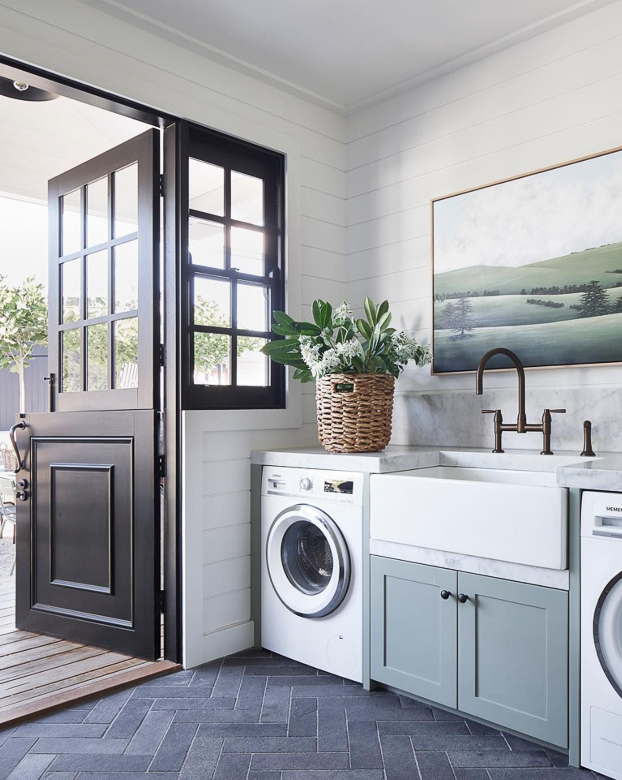
Design: Kate Walker Design. Styling: Julia Green. Photo: Armelle Habib
Layout & Circulation Space
Allow at least 1m from your bench to the wall, to ensure enough room to practically remove clothes from the washer and navigate within the room. Standard bench top depth within a laundry is approximately 650mm which allows for most laundry sinks and standard washing machines and dryers. Mixer taps with pull out spray nozzles are a great inclusion for washing larger items such as buckets and bins.
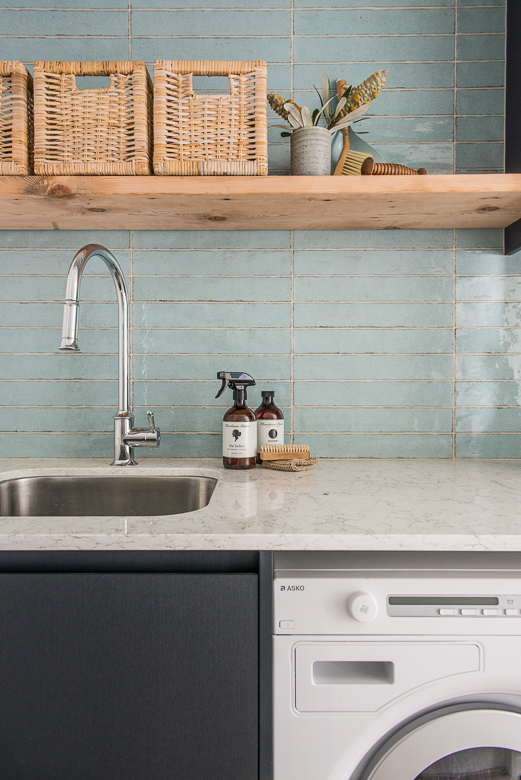
Toowoon Bay Reno
Appliances
It’s important to note that whilst there is a vast array of washers and dryers that come in standard sizes, there are an ever increasing number of appliances that fall outside the standard. We recommend that you lock in your laundry appliances before you finalise your cabinetry plans – especially if you’re yet to decide on a top loader versus a front loader.
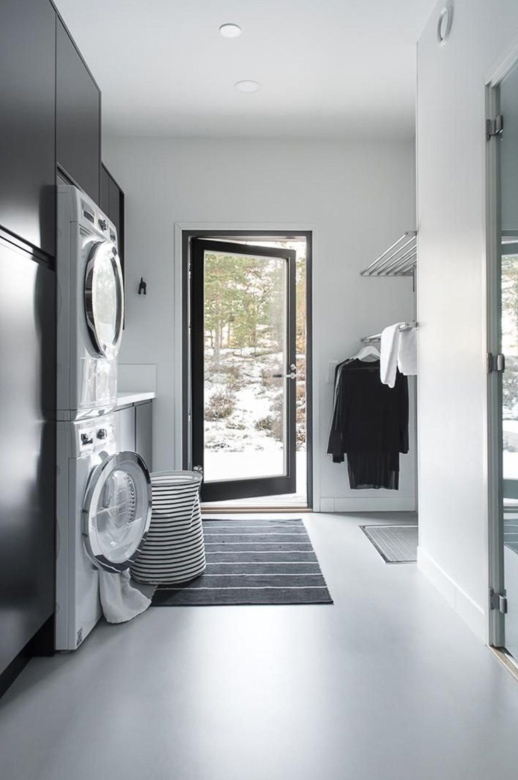
Image via Trendehouse.com
Ventilation
Given the role of a laundry (to store, wash and dry dirty clothes) we’d always recommend that you carefully consider and incorporate effective ventilation. Exhaust fans, windows and opening skylights are all great options. It’s helpful to also consider whether you’ll be using a clothes horse within the room to dry clothes, as well as the type of dryer you’ll install.
Traditional clothes dryers are vented, which means they pull in air, heat the air, then move this air around the clothes to dry them. This process means that moist air is expelled from the dryer. In turn, the room can become muggy and damp. Condenser clothes dryers however, extract the moist air and pass it through a heat exchange, which condenses the water vapour into a collection tank for removal. Condenser dryers mean that your laundry isn’t going to turn into a damp room. This means that a traditional dryer will require your laundry to have a greater amount of effective ventilation to prevent potential mould and mildew issues over time.
Storage
Like the kitchen, storage in a laundry is key to an organised space. If you’re anything like me, you want to hide anything that doesn’t look any good! A combination of under bench and overhead cabinets with tall storage is ideal. Here are a few recommendations you all added to the mix:
- Think about where and how you’d like to store your dirty clothes. Pull out bins (similar to something you’d see in a kitchen) are a great way of separating colours from whites whilst still being able to hide them away. You could also use baskets, in which case you’d need to think about where they’ll sit within the room (either on the bench or in a dedicated area).
- Fold out ironing boards are a great inclusion, especially if it’s something you do regularly. If you’re not after a dedicated ‘ironing station’ ensure you have tall storage that is able to accommodate your ironing board.
- Hanging rails are great for items that are best hung straight from the washer, or for items that have been ironed.
- Tall storage cupboards are a practical way of hiding away brooms and vacuums. Consider a power point within the cupboard for charging the stick vacuum if this is where you’ll be storing it.
- Fold out clothes horses/airers can be that annoying item that has nowhere to live when not being used. If the space allows, consider a cupboard with enough space to allow for storage of these items.
- If living in a cooler environment, consider a drying cupboard with ventilation.
